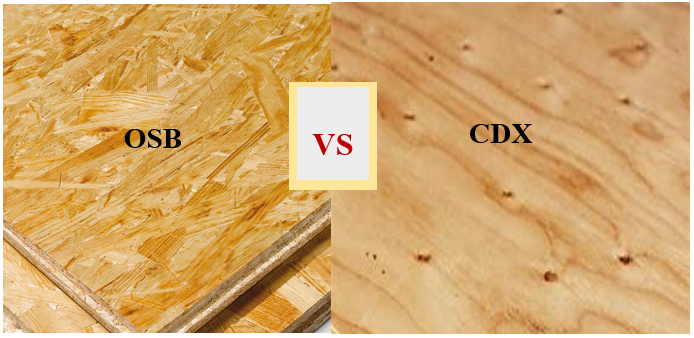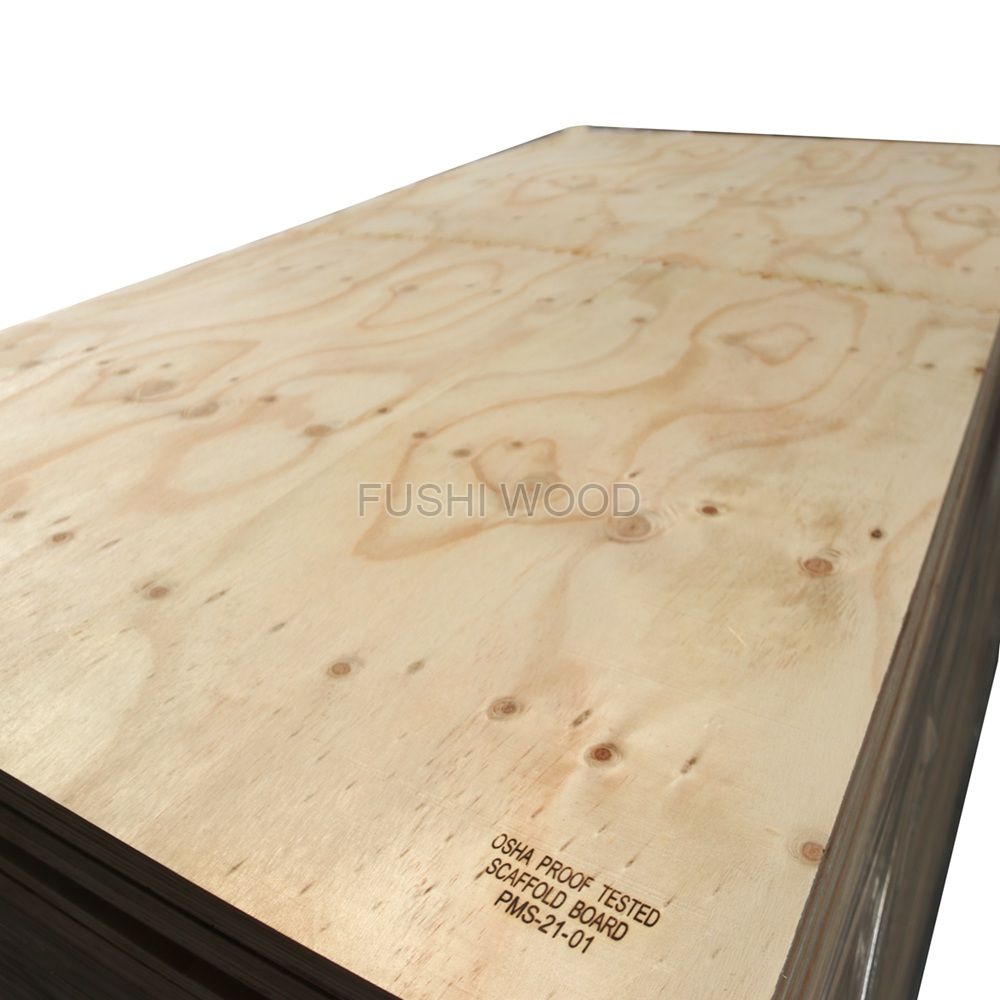Have you ever wondered if CDX plywood is waterproof? Well, you’re in the right place! In this article, we’ll explore the waterproofing qualities of CDX plywood and give you all the information you need. So let’s dive in and find out if CDX plywood can stand up to water like a champ!
CDX plywood is commonly used in construction projects, but when it comes to water resistance, things can get a little tricky. While CDX plywood is not entirely waterproof, it does have some level of moisture resistance. This means that it can withstand exposure to water for a limited time without deteriorating or warping.
So, what does this mean for you? If you’re planning to use CDX plywood in an area that is prone to moisture, such as a bathroom or basement, it’s essential to take precautions. Applying a waterproof sealant or coating to the plywood can significantly enhance its resistance to water damage.
Now that you know the basics, let’s dig a little deeper and explore the factors that affect the water resistance of CDX plywood. Understanding these factors will help you make an informed decision about using CDX plywood in your next project. So let’s get started and unlock the secrets of CDX plywood’s water resistance!

Is CDX Plywood Waterproof?
CDX plywood is a type of plywood commonly used in construction and woodworking projects. One question that often arises when considering CDX plywood is whether it is waterproof. In this article, we will delve into the properties of CDX plywood and explore its water resistance capabilities. We will also discuss the benefits of using CDX plywood and provide tips for maximizing its water resistance.
Understanding CDX Plywood
CDX plywood is an engineered wood product made by gluing together thin layers of wood veneer. The letters “CD” in CDX plywood refer to the quality of the plywood’s face veneer. “C” stands for the quality of the front face, which may have knots and other imperfections, while “D” stands for the quality of the back face, which may have rough patches and voids. The “X” indicates that the plywood is exterior grade, meaning it is suitable for outdoor applications.
Water Resistance of CDX Plywood
CDX plywood is not inherently waterproof. It is designed to have a certain level of moisture resistance, which makes it suitable for use in damp or outdoor environments. The glue used in CDX plywood is generally water-resistant, and the exterior-grade veneers can handle some exposure to moisture without significantly compromising the integrity of the plywood.
However, it is important to note that CDX plywood is not completely impervious to water. Over time, prolonged exposure to water or moisture can cause the plywood to delaminate or warp. It is crucial to take proper precautions and protect CDX plywood from excessive moisture to ensure its longevity and performance. This can be achieved through proper sealing, finishing, and regular maintenance.
Benefits of Using CDX Plywood
While CDX plywood may not be completely waterproof, it offers several benefits that make it an excellent choice for various applications. Here are some advantages of using CDX plywood:
1. Strength and durability: CDX plywood is known for its strength and durability. It can withstand heavy loads and resist impacts, making it suitable for construction projects that require robust materials.
2. Cost-effective: CDX plywood is relatively affordable compared to other types of plywood, making it a cost-effective choice for both professionals and DIY enthusiasts.
3. Versatility: CDX plywood is versatile and can be used for a wide range of applications, including roofing, subflooring, sheathing, and exterior cladding.
4. Easy to work with: Due to its construction and composition, CDX plywood is relatively easy to cut, shape, and install, making it a popular choice among builders and carpenters.
5. Availability: CDX plywood is widely available at hardware stores and lumberyards, making it easily accessible.
Tips for Maximizing Water Resistance
Although CDX plywood is not completely waterproof, there are steps you can take to maximize its water resistance and protect it from moisture damage. Here are some tips to consider:
1. Proper sealing: Before using CDX plywood in outdoor applications, it is crucial to properly seal it with a weather-resistant sealer or paint. This will create a barrier that prevents water from penetrating the plywood.
2. Regular maintenance: Regularly inspecting and maintaining the sealed surface of CDX plywood is essential for protecting it from water damage. Look for signs of peeling or cracking in the sealer and address any issues promptly.
3. Elevate and slope: When using CDX plywood for outdoor projects such as decking or siding, ensure proper elevation and slope to allow for water drainage. This will help prevent water from pooling and seeping into the plywood.
4. Avoid prolonged exposure: While CDX plywood can handle some exposure to moisture, it is best to avoid prolonged exposure to heavy rain, excessive humidity, or standing water. Ensure proper drainage and adequate ventilation to minimize moisture buildup.
5. Regular inspections: Periodically inspect CDX plywood for signs of water damage, such as warping, delamination, or mold growth. Address any issues immediately to prevent further damage and maintain the integrity of the plywood.
By following these tips and taking proper precautions, you can maximize the water resistance of CDX plywood and ensure its longevity in various applications.
Common Applications of CDX Plywood
CDX Plywood in Construction
CDX plywood is widely used in the construction industry for a range of applications. Its strength and durability make it suitable for structural purposes such as:
1. Roof sheathing: CDX plywood provides a solid base for roofing materials, protecting the building from the elements.
2. Subflooring: CDX plywood is commonly used as a subflooring material, providing a stable and level surface for finished flooring.
3. Wall sheathing: CDX plywood is used as sheathing for exterior and interior walls, providing stability and a base for insulation and finishes.
4. Formwork: CDX plywood is often used as formwork for concrete structures, providing temporary support and shaping the concrete during construction.
CDX Plywood in DIY Projects
CDX plywood is also a popular choice for DIY projects due to its versatility and affordability. Some common applications of CDX plywood in DIY projects include:
1. Outdoor furniture: CDX plywood can be used to build outdoor furniture such as tables, benches, and chairs.
2. Sheds and storage units: CDX plywood is commonly used to construct sheds, storage units, and other outdoor structures.
3. Raised garden beds: CDX plywood can be used to create raised garden beds, providing a sturdy and affordable solution for gardening.
4. Signs and displays: CDX plywood can be cut and painted to create signs, displays, and other decorative elements.
In conclusion, while CDX plywood is not completely waterproof, it offers a certain level of water resistance that makes it suitable for various applications. By understanding its properties and taking proper precautions, such as proper sealing and maintenance, you can maximize the water resistance of CDX plywood and ensure its longevity. Whether used in construction or DIY projects, CDX plywood’s strength, affordability, and versatility make it a popular choice for many applications.
Key Takeaways: Is CDX Plywood Waterproof?
- CDX plywood is not inherently waterproof.
- CDX is treated with water-resistant glue, but it still needs additional protection against moisture.
- To make CDX plywood waterproof, you can apply a waterproof sealer or paint.
- Proper installation and sealing of edges and joints are crucial for enhancing the waterproofing capabilities of CDX plywood.
- Regular maintenance and reapplication of sealers are necessary to maintain the waterproofing properties of CDX plywood.
Frequently Asked Questions
Welcome to our FAQ section where we answer some common questions related to the waterproofing of CDX plywood. If you’re looking for information on whether CDX plywood can be used in damp or wet environments, you’ve come to the right place. Read on to find answers to your queries.
1. Can CDX plywood be used for outdoor projects?
Yes, CDX plywood is commonly used for outdoor projects. Its weather and moisture-resistant properties make it suitable for applications such as roofing, sheathing, exterior walls, and subfloors. CDX plywood is made with an exterior glue that helps protect it from water damage and extends its lifespan.
However, it’s important to note that while CDX plywood is water-resistant, it is not completely waterproof. To ensure its longevity, proper sealing and finishing, such as using a water repellent coating or paint, is recommended.
2. Is CDX plywood suitable for bathroom or kitchen installations?
CDX plywood is not the ideal choice for bathroom or kitchen installations where it will be consistently exposed to high levels of moisture. While it may resist water to an extent, prolonged exposure to moisture can cause the plywood to warp, delaminate, or develop mold and rot.
For these areas, it’s better to use plywood specifically designed for wet environments, such as marine-grade plywood or cement boards. These materials have enhanced waterproofing properties and are better suited to withstand the conditions found in bathrooms and kitchens.
3. Can I use CDX plywood in a basement or other below-ground applications?
Using CDX plywood in below-ground applications, such as basements, is not recommended. The high levels of dampness and potential for water infiltration in basements can lead to damage and deterioration of CDX plywood.
Instead, it is advisable to use materials that are specifically designed for below-ground use, such as pressure-treated plywood or concrete blocks. These materials are engineered to withstand the unique challenges posed by below-ground environments.
4. How can I protect CDX plywood from water damage?
To protect CDX plywood from water damage, it’s important to apply a suitable sealant or finish. This could be a waterproofing paint or a specialized wood sealer that helps repel water and prevents moisture from seeping into the plywood.
In addition to sealing, it’s crucial to avoid prolonged exposure to standing water or direct contact with water sources to maintain the longevity of CDX plywood. Regularly inspecting and addressing any signs of water damage promptly is also essential to prevent further deterioration.
5. What are the alternatives to CDX plywood for waterproof applications?
If you require a plywood alternative with better waterproofing properties, there are a few options to consider. One popular choice is marine-grade plywood, which is specifically designed to withstand moisture exposure. Cement boards, such as fiber cement or cementitious backer boards, are also commonly used for waterproof applications like shower surrounds and bathroom floors.
Another alternative is to use waterproofing membranes or coatings over standard plywood to improve its resistance to water. These products create a protective barrier that inhibits moisture penetration. However, it’s crucial to follow the manufacturer’s instructions and recommendations for proper installation to ensure effectiveness.
Summary
CDX plywood is not waterproof and can be damaged by exposure to water and moisture. It is important to use a waterproofing barrier, such as paint or sealant, to protect CDX plywood from water damage.
When using CDX plywood for projects like roofing or outdoor structures, it is crucial to ensure proper waterproofing measures are in place to maintain its durability and longevity.

